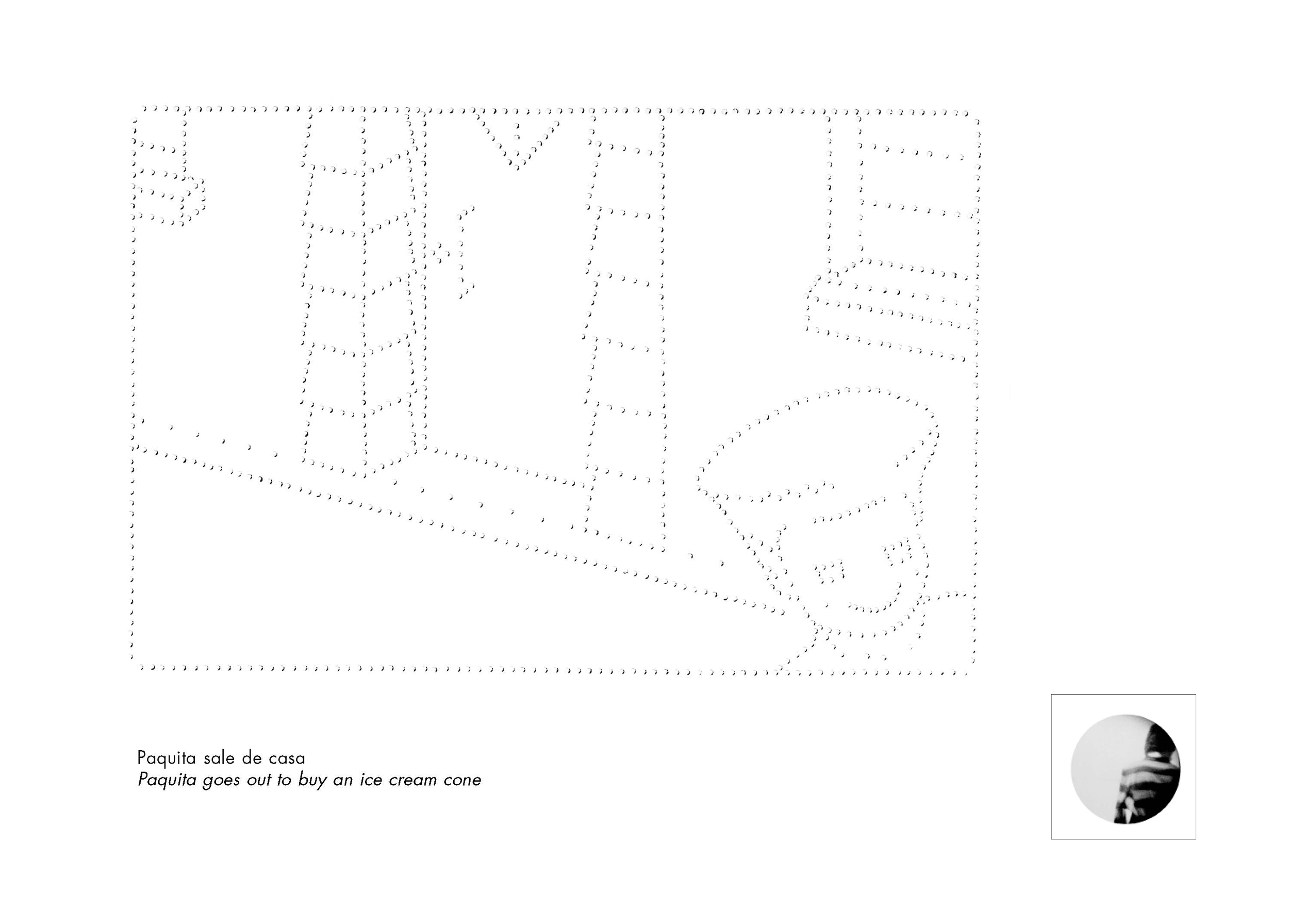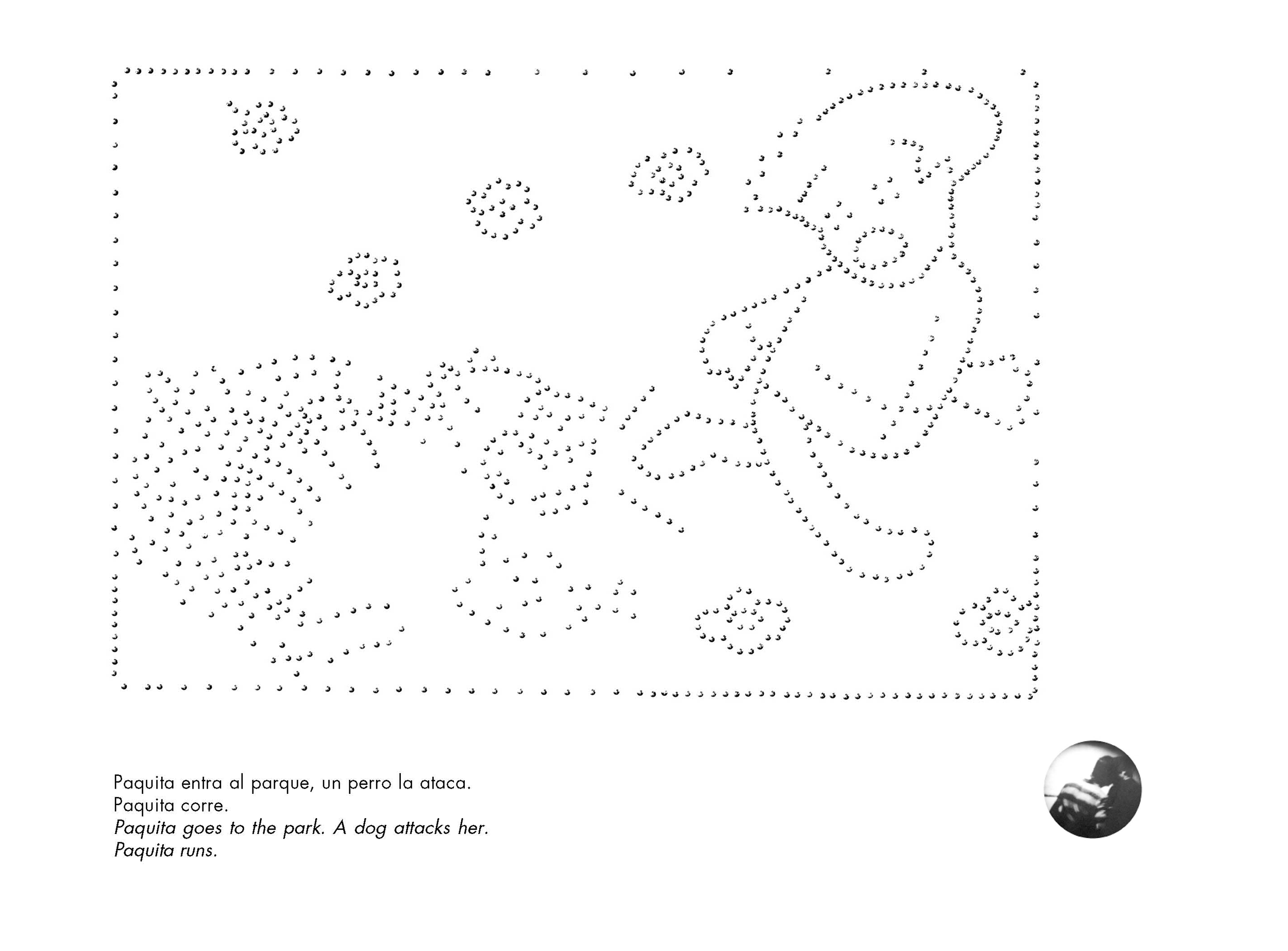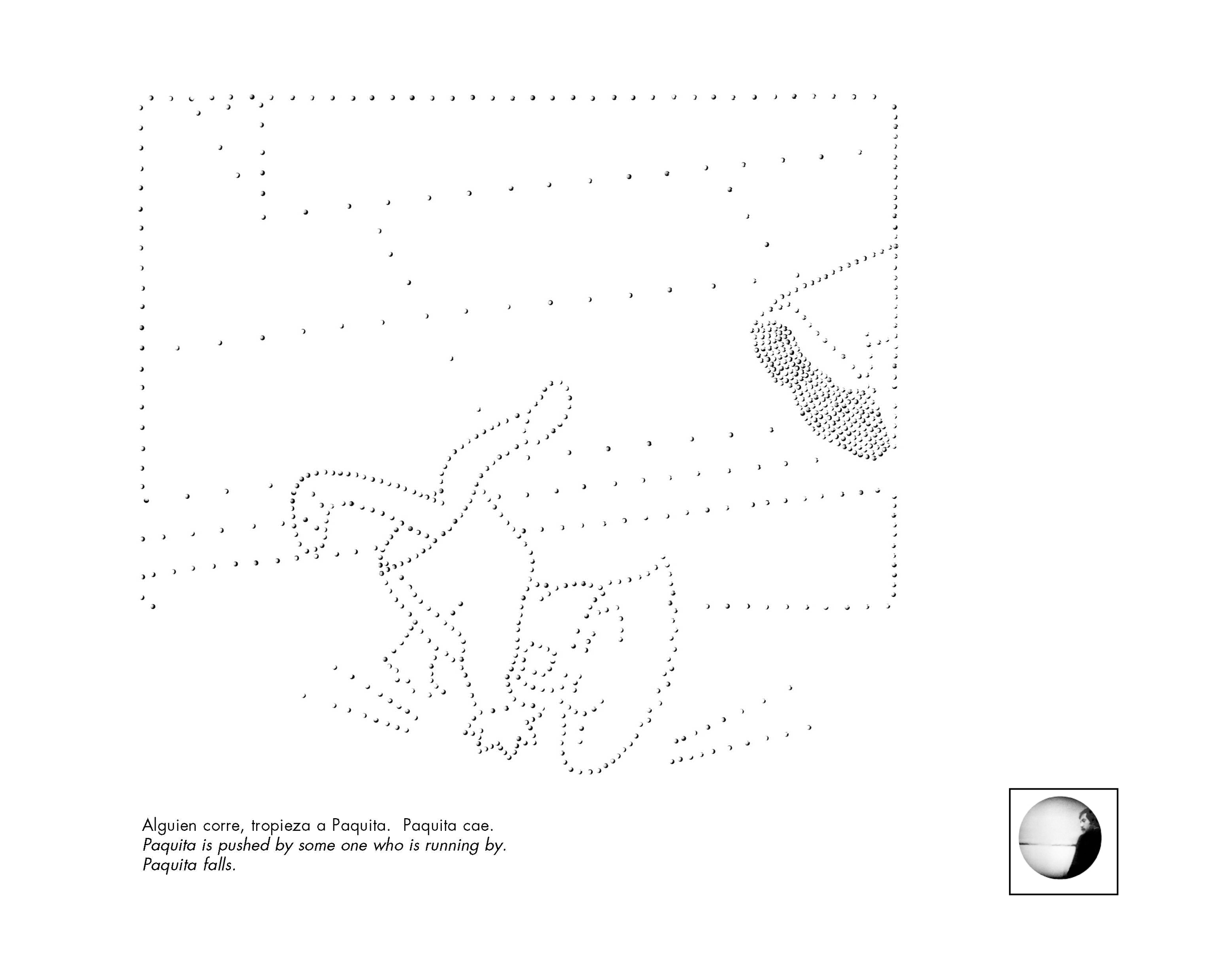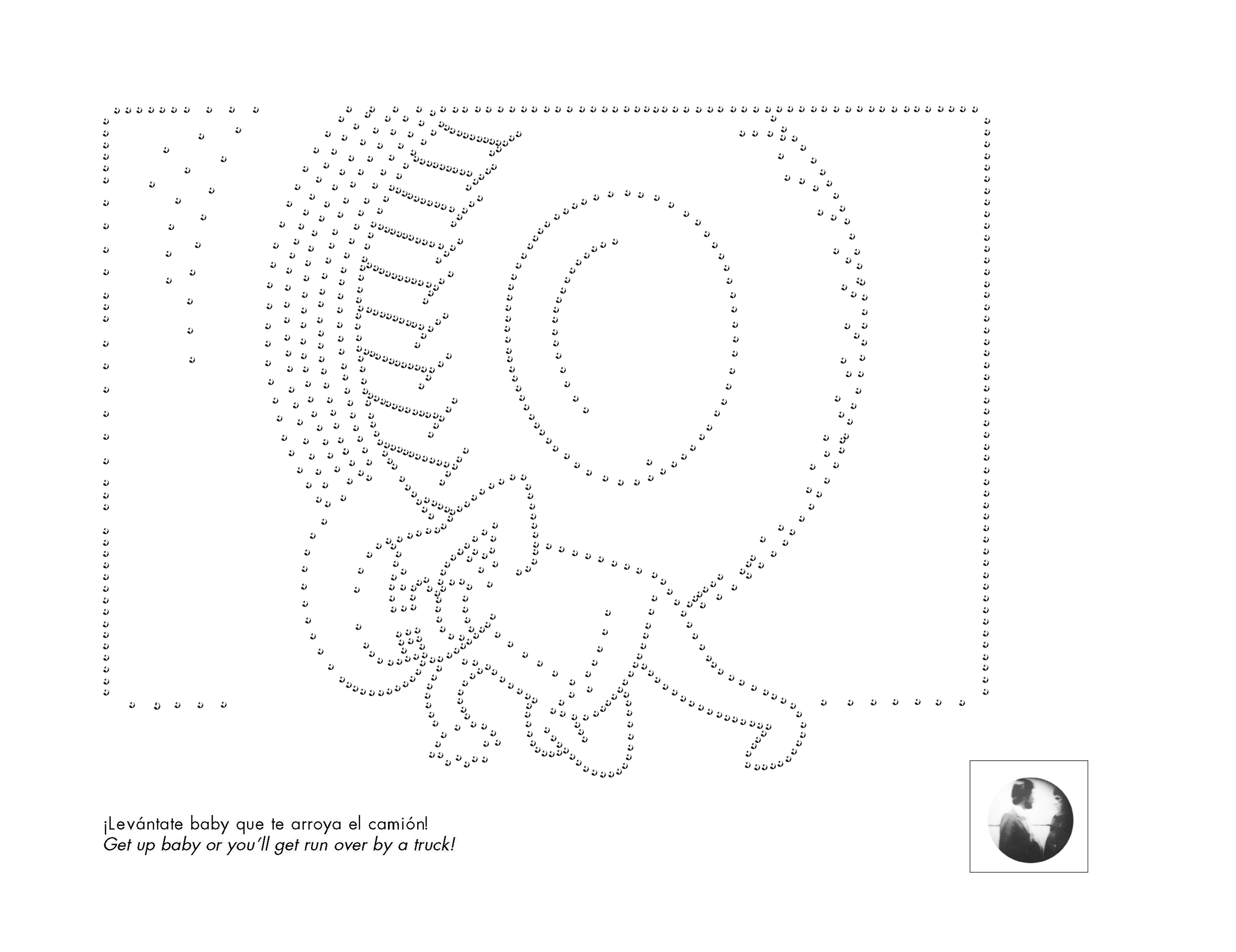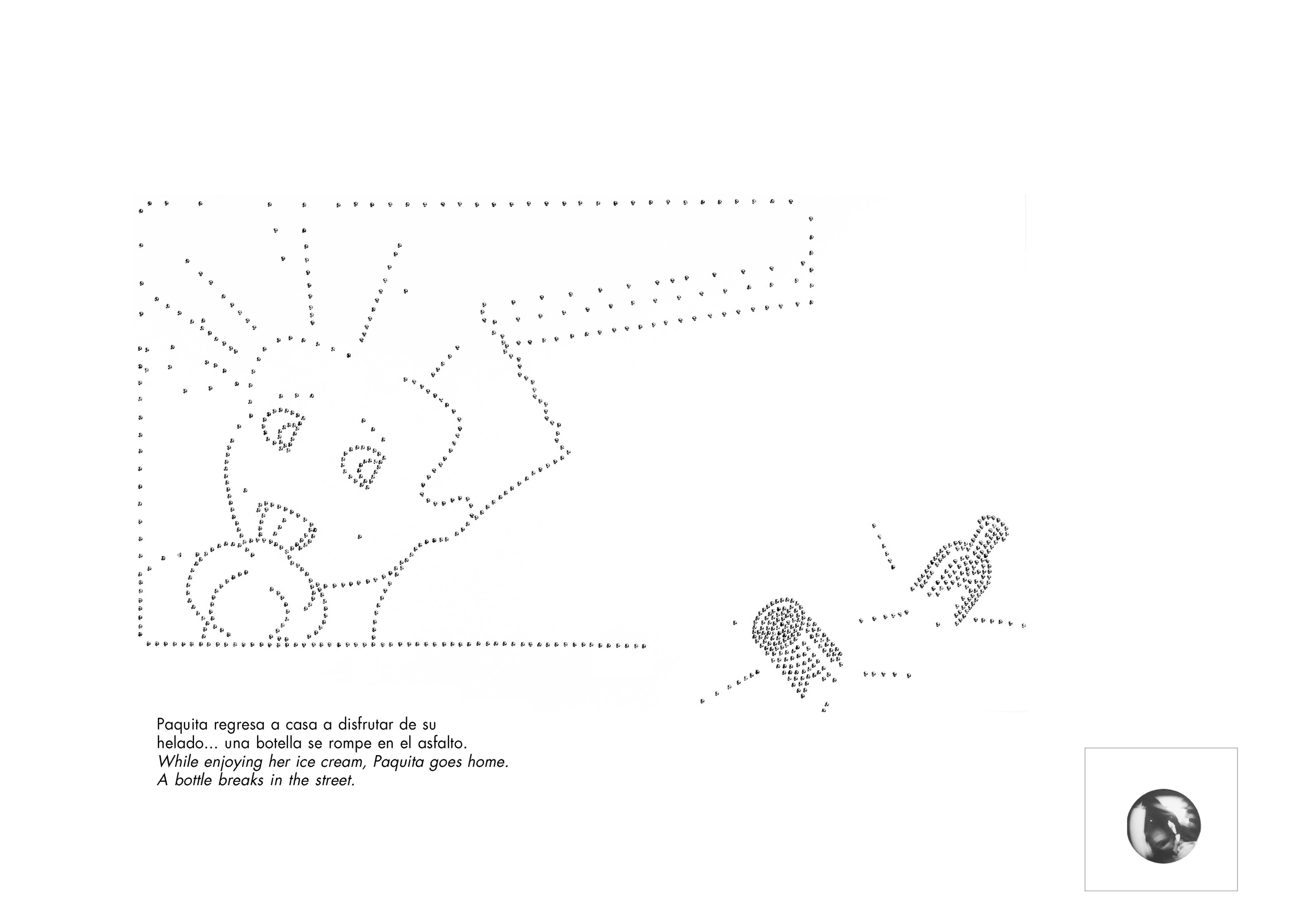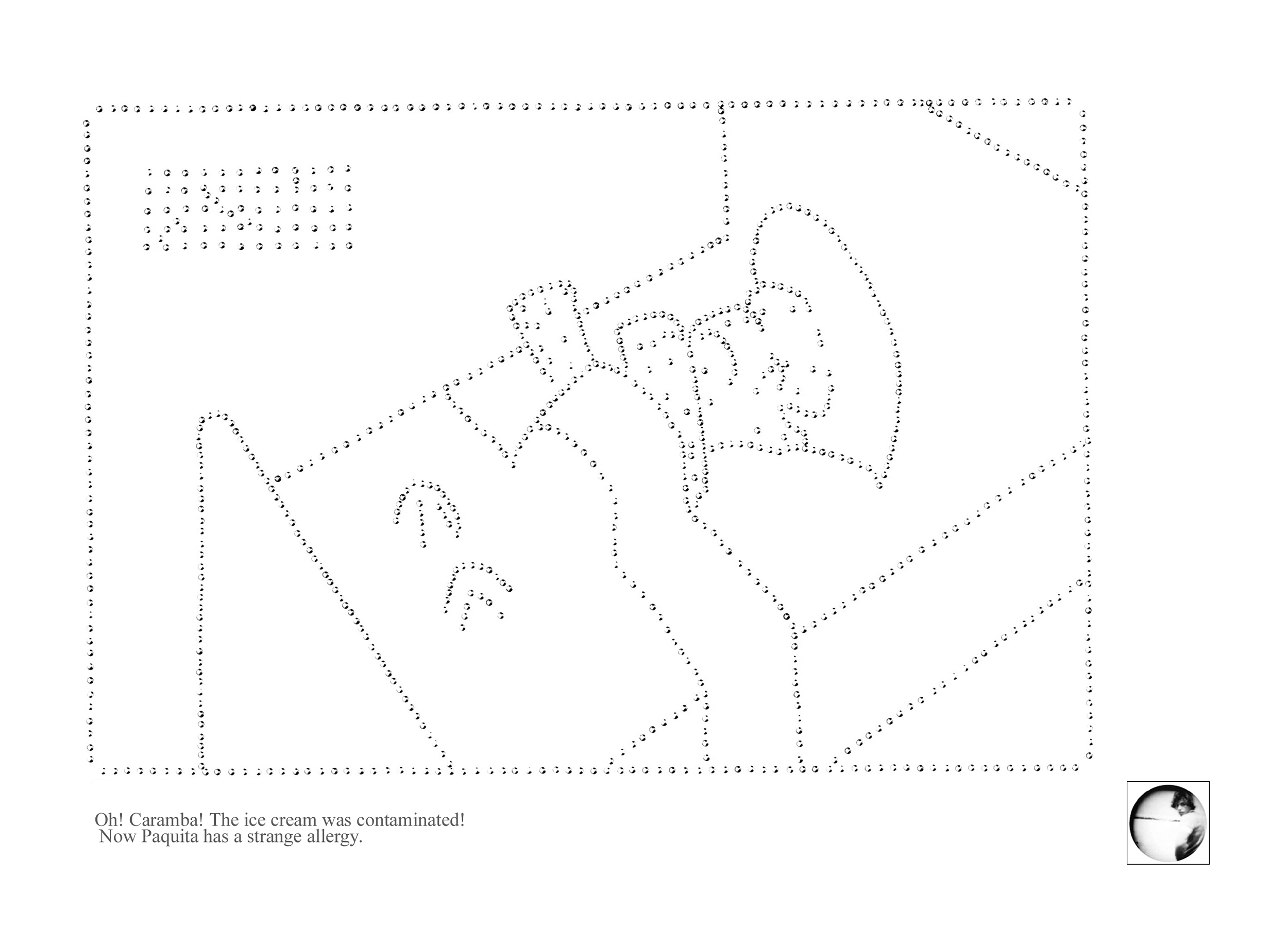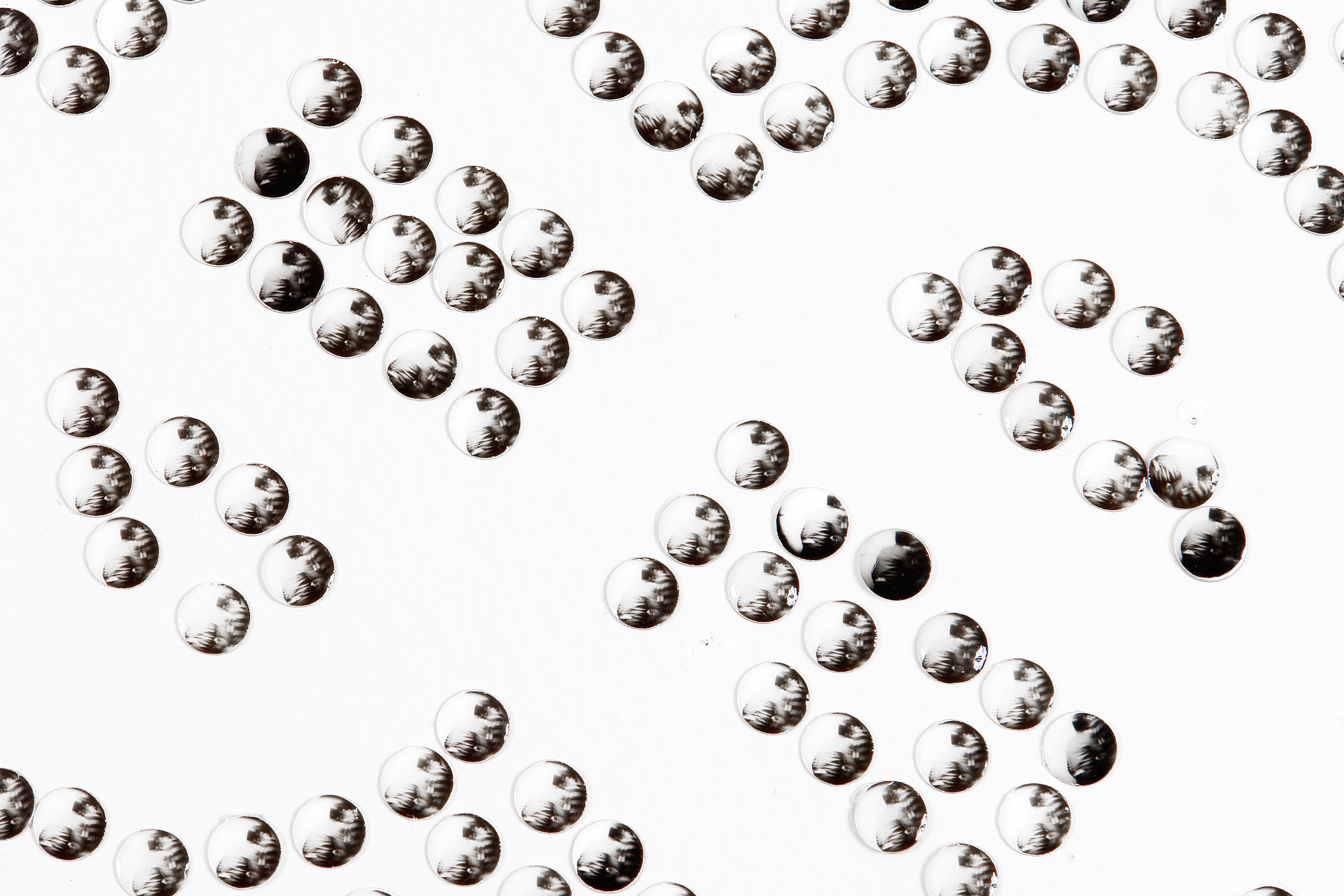Reducciones fotográficas sobre pared y resina epoxica.
8000 reducciones de 0,4 cm de Ø en 7 formatos de 92 x 135 c/u
1997
Si consideramos el arte de procesos como una serie de eventos relacionados entre sí por una idea o por una serie de ideas, en la que esos pasos previos a una conclusión son en sí la obra misma, poseedora de forma, materia y sentido entonces Paquita Compra un Helado se inscribe dentro de tal clasificación, es una obra procesual.
El origen de Paquita es una serie fotográfica documental del año 79 tomada en el baño de una sala de cine del centro de Bogotá a través de un orificio en la puerta de un retrete, en la que capté el encuentro casual de una pareja anónima. Tiempo atrás en el año 73 había obtenido algunos documentos similares y ese mismo año había empezado a experimentar con reducciones fotográficas en contra de la lógica del medio fotográfico, que sentaba la ampliación como única vía de impresión. Así, al revelar esas tomas decidí reducirlas y colocar al espectador en la posición del voyeur. Lo siguiente fue recortarlas en círculos.
El primer montaje con estos círculos fotográficos tubo lugar en la Galería Garces Velásquez de Bogotá en el año 81 dentro de una colectiva curada por Alvaro Barrios quien reunío propuestas para la década que se iniciaba, ese montaje de cinco mil reducciones fue una línea recta a tres metros del piso con una curva en uno de sus extremos que titulé Vía Láctea, título que había dado a una serie de fotografías del interior del teatro Faenza, en la que aparecía la línea blanca de la cenefa decorativa del cielo raso corriendo justo sobre la fila de palcos cómplices de infinitos encuentros eróticos.
Años después invitado a la última bienal de Medellín pedí a mis sobrinas, niñas entonces, me dibujaran una casa, un árbol, un gato, una gallina, con estos pequeños dibujos y las reducciones en el bolsillo fui a Medellín cavilando sobre esta nueva versión. Quería hacer una obra que tuviera doble lectura, una, la externa de carácter infantil y la segunda la de la imagen fotográfica cargada de crudeza. Ahora pensando en los impulsos que me movieron a usar esa paradoja aparecen claramente la precocidad sexual que viví, el recuerdo de cierto abuso y el haber vivido mi infancia día a día con la certeza de llevar como una astilla la sexualidad despierta.
En el año 96 Maricarmen Ramírez escogió esta obra para su proyecto RE -ALYGNING VISION sobre el boom del dibujo en sur América. En esta última versión me propuse reforzar el sentido narrativo que originalmente había aparecido en la segunda edición, la de la bienal de Medellín. Paquita el personaje, emerge de una mancha de pigmento rosado que había quedado sobre un plástico sobre el que había hecho una pintura. Leí esa mancha como un pequeña niña corriendo feliz saboreando un helado, construí entonces la metáfora: cono de helado – objeto del deseo. El humor negro de la historieta, los accidentes que sufre Paquita y el penoso desenlace están basados en los terribles hechos que ha ocasionado la intolerancia hacia el homosexualismo en nuestro medio y en menor grado diría, el VIH.
Miguel Angel Rojas
Paquita Buys an Ice-Cream Cone
Photographic reductions on a wall and epoxy resin
8000 reductions, 3/16 of an inch in diameter arranged in 7 panels, 36 x 53 inches each
1997
If we consider processual art to be a sequence of events linked by an idea or by a series of ideas, wherein the steps leading to a conclusion are actually the work itself, possessing form, material, and meaning, then Paquita Buys an Ice-Cream Cone falls within that category: it is a processual piece. It came out of a documentary photographic series from 1979, taken in the bathroom of a movie theater in downtown Bogotá, through a hole in the door of one of the stalls, and captures the casual encounter of an unidentified couple. Some time earlier, in 1973, I had obtained similar photographs, and that same year I began experimenting with photographic reductions, going against the logic of the medium, which establishes enlargement as the only legitimate kind of printing. So, when developing these shots, I chose to reduce them and thus place the spectator in the position of the voyeur. My next step was to cut them into circles.
The first montage using these circular photos took place at the Garcés Velásquez Gallery in Bogotá in 1981 as part of a group show curated by Álvaro Barrios who gathered together art projects for the nascent decade. The montage of 5000 reductions was laid out in a straight line on the wall, ten feet off the floor, with a curve at one end. I called it Milky Way, a title that I had given to a series of photographs of the interior of the Faenza Theater showing the white line of the ceiling’s decorative border running just above the line of box seats, which bore witness to infinite erotic encounters.
Years later, when I was invited to participate in the last Medellín Biennial, I asked my nieces, who were still little girls then, to draw a house, a tree, a cat, and a hen, and with those small drawings and the photographic reductions, I went to Medellín pondering my new version. I wanted to create a piece with a dual interpretation: the external, childish piece contrasting with the other extreme of a photograph showing a harsh reality. Now, reflecting on what drove me to use that paradox, it’s clear that it was my experience of sexual precocity, the memory of abuse, and the fact of spending my childhood, day in and day out, with the certainty of carrying my awakening sexuality in me like a splinter.
In 1996, Maricarmen Ramírez selected this work for her project Re-Aligning Vision, about the boom of drawing in South America. In this later version, my objective was to reinforce the narrative sense that had originally appeared in the second edition at the Medellín Biennial. The character of Paquita emerged from a splotch of pink pigment that had remained on a piece of plastic on which I had been doing a painting. I interpreted that spot as a little girl running happily while eating an ice-cream cone, thus constructing the ice-cream cone as a metaphor for the object of desire. The dark humor of the comic strip, the accidents that Paquita suffers, and the unfortunate ending are based on the terrible events sparked by the intolerance toward homosexuality in this region and, to a lesser degree, by HIV.
Miguel Ángel Rojas
Translated by Michelle Suderman

